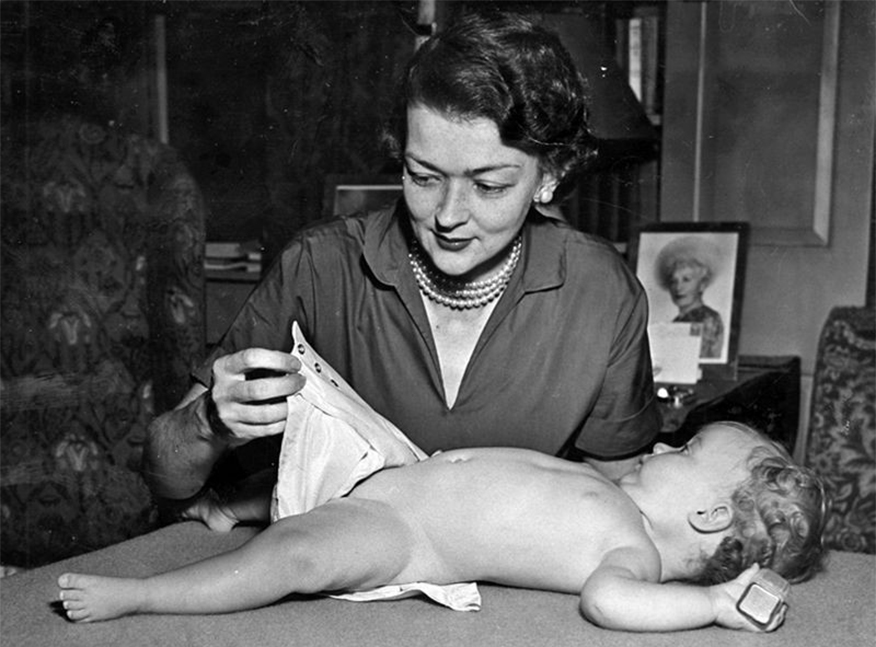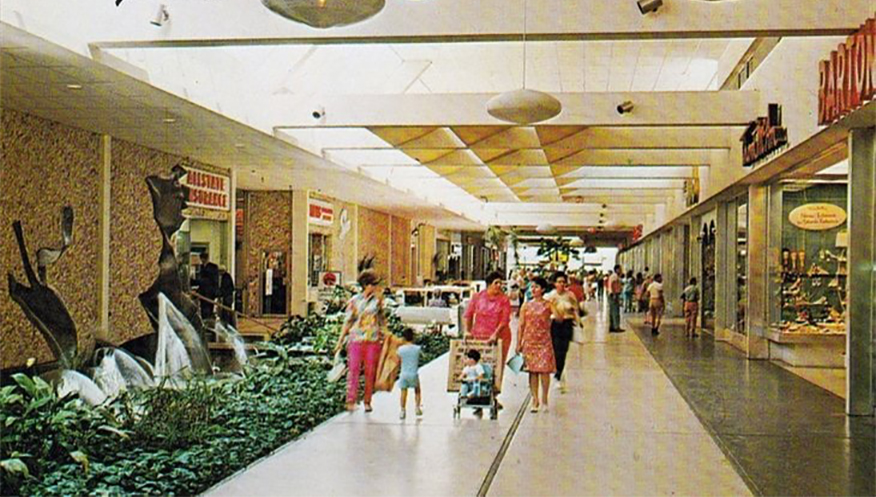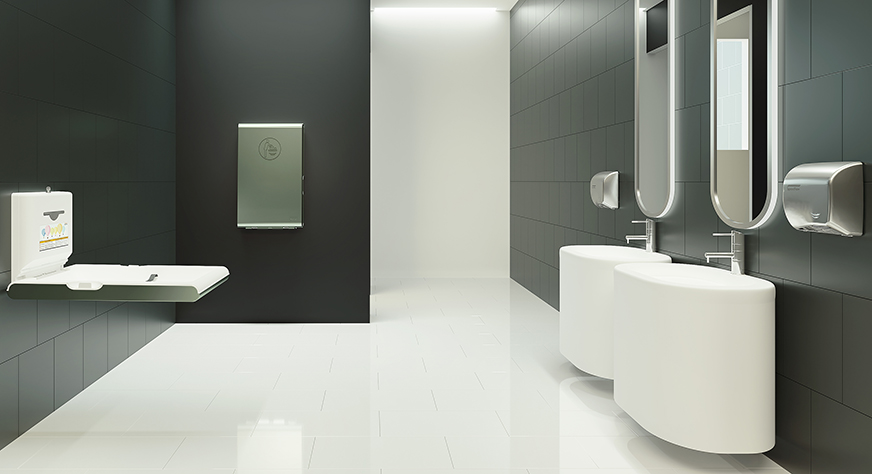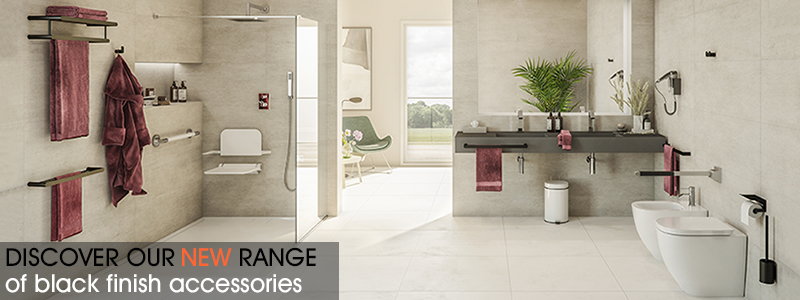The futuristic dream of wall-mounted baby changing stations
The interpretation of dreams is something that has prompted numerous studies over the years. According to several psychoanalysts, among them Sigmund Freud, when we sleep the subconscious is activated, which reveals feelings and emotions that are repressed during waking hours. It is also said that sleep reflects the concerns and issues that we obsess about in everyday life. There are even theories that suggest that in dreams we often find the solutions to the problems we face in real life.
That being said, and to act as an introduction, what I'm about to tell you happened to me the other day while I was watching Back to the Future 2 on the sofa at home. Yes, yes, I know, it's not the latest cinema release, but as you get older it’s nice to relive your younger days. The fact is, while I was watching the film on the sofa at home, either because I was tired or because of the aforementioned (age), or because of both factors, I fell fast asleep.

The next thing I remember is being in a shopping centre that had a very futuristic aesthetic and where people were travelling on flying skateboards (just like in the film). I found myself there looking at how they had Babymedi changing stations installed in their public toilets: they were the Babymedi of the future! It was as if I had taken the DeLorean from Back to the Future and travelled forward 25 years. I remember that in order to enter the bathroom I had to use eye recognition and that once inside, in order to use our Babymedi station, I had to do so through a kind of hologram that was displayed through virtual reality glasses. Through the glasses, I could choose the changing table’s characteristics, such as colours, finishes, ambient music for changing the baby, green filters that eliminated viruses and bacteria... Right after that, I remember startling awake. The film had already finished and I felt I had experienced something very strange. Thank goodness it was all a dream, I thought!
Ten minutes later, once I had come back to reality, I started to wonder if this dream could come true in the future and if our changing stations will or should be like this in the future (following one of the dream theories I explained at the beginning). Once again, I didn’t know the answer. How would I know what changing stations would or should look like in the future!?
It’s as if Marion O'Brien Donovan, the inventor of disposable nappies back in 1949, had dreamt then what nappies would have looked like today. Would it have matched today's reality? Possibly not, because society was very different back then and a lot has changed.

If we take a look at the world of baby changing stations, we would have to go back to 1929 when the first nappy changing rooms appeared on New York’s Jones Beach. Of course, at that time the concept of a wall-mounted nappy changing station did not exist and they were not at all similar to the ones we have today, they were just simple tables! Could they have imagined or dreamt what nappy changing tables would be like today? It’s hard to believe, to be honest.
It wasn't until the 1980s that the concept of the wall-mounted baby changing stations as we know them today was created and developed, and was incorporated on a massive scale into public toilets. The only developments and innovations in this area during the 1950s and 1960s were limited to the home.
In 1986, four Minnesota entrepreneurs teamed up in a company called JBJ Industries and designed a baby changing station that attached to the wall of public toilets. The enormous changes to family habits and society in general since the preceding decade of the 1970s (massive incorporation of women into economic and social life outside of the home, more time and greater concern from parents to spend more time with their children, more time spent by their children outside the home in restaurants, cinemas, shopping centres ...), made them understand the need to create a folding device that could be mounted on a wall in public toilets. This would enable parents to change their babies quickly and easily, without having to interrupt their “new pace of life” and to incorporate their little ones into their new social and consumer habits outside of the home.
The entrepreneurs realised that family convenience was now an important factor for parents when deciding where to spend their free time. This resulted in a mass introduction of wall-mounted changing stations in catering chains, hotels, cinemas and shopping centres. As a consequence, many companies started manufacturing and/or marketing wall-mounted changing stations for these public places. It was a perfect win-win situation.

Over the next two decades of the 1990s and 2000s, although this clear positive evolution and expansion of their presence in public toilets continued, the same could not be said for their designs and finishes. From the initial design created by JBJ Industries in 1986, manufacturers and distributors evolved very little: moulded polyethylene and steel, rounded edges for extra safety, and compact - ideal for small bathrooms.
It wasn't until the early 2010s that wall-mounted changing station companies began to invest and innovate more seriously in their designs and finishes. They realised that practicality, quality and durability were no longer enough. Now the customers were also looking for the bathroom to be perfectly integrated into the design of the remaining communal space area. An image had to be conveyed and taken care of, and the bathrooms were equally important in achieving this. Therefore, baby changing stations also had to present a much more refined, modern and elegant image.
That's how our Babymedi baby changing station was first produced and marketed in 2016. Mediclinics Babymedi was a clear example of this development: quality, durability, functionality and design.

Since its launch in 2016, Babymedi has undergone significant development, incorporating new materials such as stainless steel and a black finish, offering double orientation, both vertically and horizontally, creating a new kit that allows it to be built-in (it doesn't take up space), among other features.
But what I would fundamentally like to emphasise and what made and continues to make Babymedi a different baby changing station to the other options on the market is the double protection it offers to the baby and its parents: BioCote + Ioniser. With the unfortunate outbreak of the Covid Pandemic in 2020, many customers started to demand maximum protection and hygiene guarantees. In addition to the BioCote antibacterial additive, which had already been incorporated since its inception in 2016, in 2022 Mediclinics developed and introduced a new technology that eliminated the effect of viruses and bacteria: Ion Hygienic (ionizer). Thanks to both of these, babies are kept away from any harmful effects, making the Mediclinics Babymedi baby changing station the most hygienic and safest solution on the market.
And now to conclude, and to return to the beginning of this article, the questions I put to you are: Looking at the futuristic dream I had and analysing all the development of the changing station:
- Do you think that in 1929 anyone could have imagined or dreamt of a baby changing station like the Babymedi?
- Do you think my futuristic dream could come true in the distant future?
If I had to take a guess, I would answer no to the first question, and with regard to the second, I wouldn't rule it out, especially in view of the emergence of powerful technologies, such as AI (artificial intelligence), augmented reality, the metaverse or virtual reality. What I doubt is perhaps the timing, since everything is moving faster and faster. I'll leave that with you.
Enrique González
Online Marketing Manager
Mediclinics S.A



